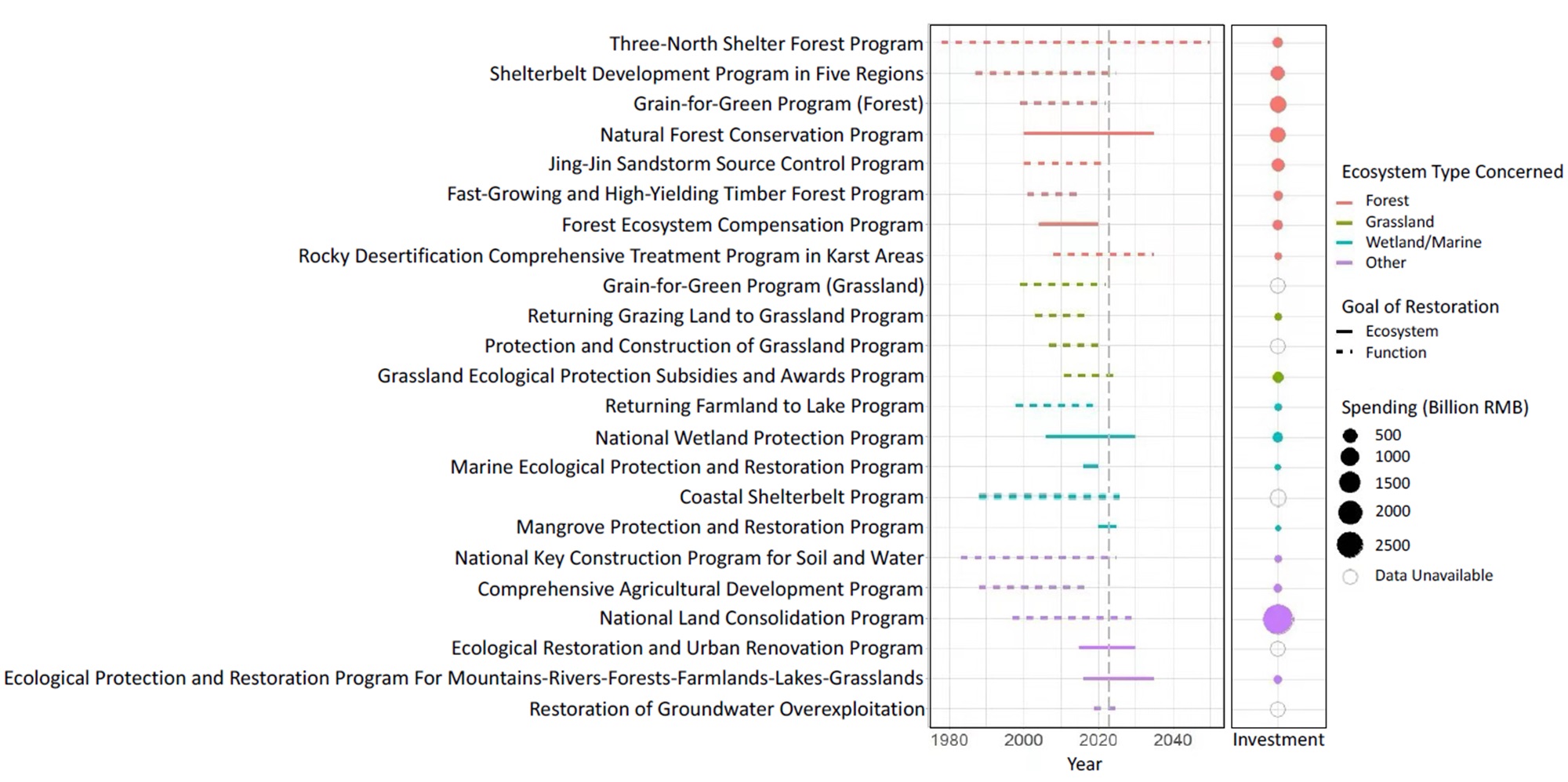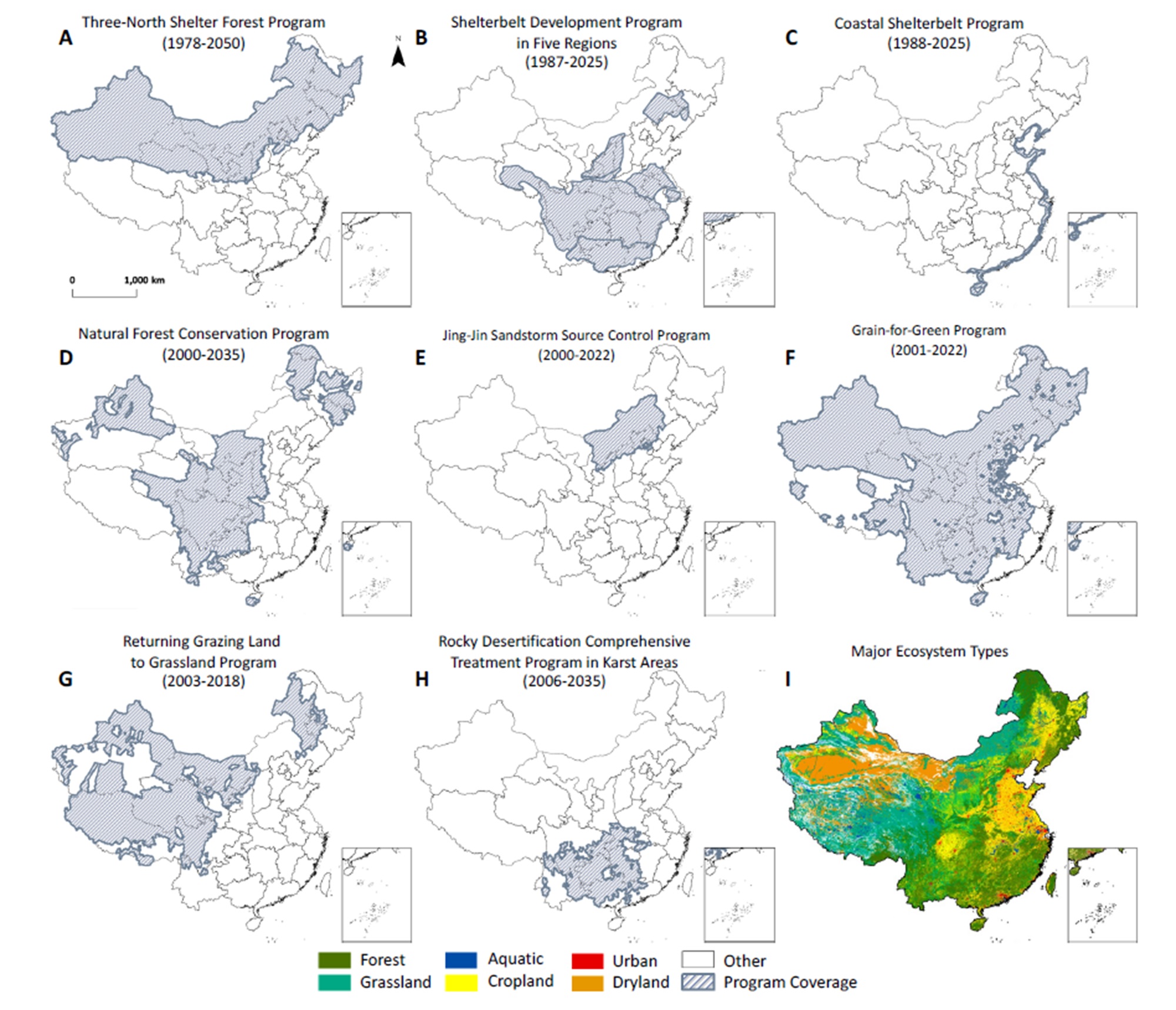China, one of the most biodiverse countries in the world, has implemented substantial large-scale ecosystem restoration programs over the past five decades. What have these efforts achieved, and what challenges remain? A new study published in Current Biology provides comprehensive insights into these questions.
This study was conducted by researchers from Duke Kunshan University, Shandong University, Peking University, and the Institute of Botany of the Chinese Academy of Sciences.
Initially, China’s restoration initiatives were primarily in response to natural disasters, such as sandstorms and floods. Over time, the focus shifted from restoring specific ecological functions to including biodiversity and ecosystem integrity, and it expanded from terrestrial ecosystems to freshwater, marine, and urban ecosystems.

Alongside changes in goals and targeted ecosystems, there has been a significant change in the concept and approach to restoration. Previously, the prevalent use of fast-growing exotic species (e.g., Spartina alterniflora, Japanese larch) seemingly yielded short-term success in mitigating seashore erosion and restoring forests but led to adverse outcomes, including the ‘green deserts’ and loss of indigenous species.
“There has been a notable transition in restoration approaches, shifting from pursuing rapid program results to evidence-based practices, especially in the past decade. This has been reflected in the robust Chinese policies,” Binbin Li said. “Although many restoration programs still worsen the ecological degradation instead of restoring the natural ecosystem, policies and laws now promote natural regeneration and the use of native species and species mixtures.”
Financial investment also plays a crucial role. Annual funding for restoration increased substantially from 2010 to 2020, with government funding accounting for the vast majority (~94.9%), followed by contributions from the private and public sectors and international organizations. Co-first author Dr. Shuyao Wu from Shandong University noted the effectiveness of the central-to-local government financing mechanism, which fosters diverse funding sources.
However, challenges persist. There is still insufficient emphasis on restoring the entire natural ecosystem, and the application of ecological knowledge is insufficient compared to engineering approaches. Trade-offs among different goals may compromise broader ecosystem health.

Looking ahead, researchers suggest setting clear goals that contemplate trade-offs and integrations between production and livelihood considerations. Co-authors from Peking University and the Chinese Academy of Sciences believe maximizing natural biodiversity could bring multiple benefits, including climate change mitigation and food security. They call for long-term monitoring systems integrated with existing networks to measure scientifically sound indicators effectively.
Researchers stress collaboration across sectors and incorporating traditional knowledge with scientific expertise in restoration projects. Adaptive management can address the complexity and uncertainty intrinsic to such endeavors.
This study narrates China’s history in restoration and offers insights for other nations aiming to upscale their restoration efforts amid global biodiversity loss and climate change.

